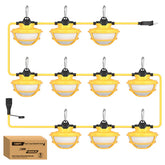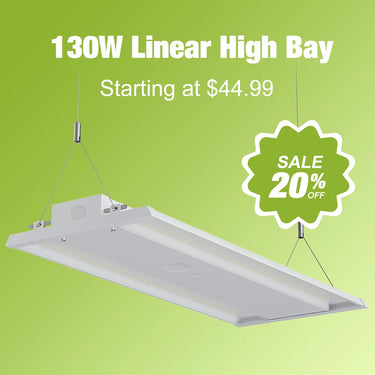16-Meter High Factory Lighting Upgrades: Expert Setups for Better Efficiency and Safety
by
NioJaydon
31 Jul 2025
Imagine standing on the floor of a 16-meter-tall factory, craning your neck to see overhead lights that are either too dim to make out details or so glaring they strain your eyes. This kind of lighting problem isn’t just a nuisance—it drags down productivity and puts workers at risk. Figuring out the right lighting for these extra-tall spaces is key to making modern industrial facilities work better.
Lighting a 16-meter-high factory isn’t something you can do with just any old fixtures. Here’s why it’s tough:
- Light fades fast: When light has to travel such a long distance, regular bulbs lose most of their power by the time it hits the floor.
- Glare is a big issue: Bright lights up high can tire out workers’ eyes, making mistakes more likely.
- Fixing them is a hassle: Changing bulbs or repairing fixtures means expensive, time-consuming high-altitude work—so lights need to last.
- Getting even light is hard: With so much space, some spots end up too bright, others too dark.
But there’s a smart way to solve these problems. Here’s how:
1. Pick the right lights: Go with high-power LED High Bay Lights
Ditch metal halide bulbs: They used to be common, but they’re energy hogs. They take forever to turn on, make colors look off (usually with a color rendering index under 65), and need constant fixing. They’re past their prime.
Choose top-notch LEDs: Look for high-power LED High Bay Lights—like JCLGL’s models—with 150W to 400W and at least 140 lumens per watt. They’re a game-changer:
- Save energy: A 150W LED from JCLGL can replace a 400W metal halide bulb, cutting energy use by over 60%.
- Lasts forever: Good LEDs run for 50,000+ hours, so you won’t need to send someone up on a lift as often.
- Turn on instantly: No waiting around for them to warm up, which helps in emergencies.
- Focus light where it’s needed: Their design lets you aim the light exactly where it should go.
2. Get the light design right: It’s all about where the light goes
Use narrow beams: Lenses or reflectors with a 60° to 90° angle keep light shooting straight down, so less gets wasted sideways—and there’s less glare.
Angle light for tricky spots: For areas like walkways or around machines, use lights with uneven (asymmetric) light patterns to put more brightness exactly where workers need it.
Plan with software: Tools like Dialux EVO let you plug in the factory’s size and how much light surfaces reflect. It simulates where to put lights to make sure brightness is even (aim for a uniformity of 0.7 or better) and glare is low (under 19 on the UGR scale).
3. Arrange lights smartly: Cover everything, and boost key areas
Light the whole space evenly: Figure out how far apart to place lights based on how much light they put out, their beam angle, and how bright you need the floor (150-300 lux for most areas). A good rule: Space them 1 to 1.2 times the height they’re installed at. That grid setup makes sure every corner is lit.
Brighten up critical spots: For places like inspection tables or where precision work happens, add extra lights. JCLGL’s LED Panel Lights work great here—they can kick up brightness to 500+ lux, perfect for detailed tasks.
Add smart controls: Split lights into separate circuits and use motion sensors or dimmers. One big auto parts plant did this in their warehouse aisles: JCLGL lights stayed at 30% brightness until someone walked by, then jumped to full power. It cut energy use by another 40%.
4. Stop glare and make fixes easy: Little things matter
Block harsh light: Pick lights with a deep “shade” (at least 30°) and add grilles or anti-glare covers. That keeps glare under 19 UGR, so workers’ eyes stay fresh.
Make repairs simple: Lamps with modular parts let you swap out bulbs or drivers from the ground, no lifts needed. And go for IP65 or higher—they’ll stand up to dust and moisture, so they last longer.
A better lighting setup does more than just make things brighter:
- Slash energy bills: LEDs plus smart controls cut lighting costs by 60-70%.
- Safer workplace: Bright, even, glare-free light means fewer tired eyes and fewer accidents.
- Less maintenance hassle: Long-lasting, easy-to-fix lights mean 80% fewer high-altitude repairs.
- More work gets done: When workers can see clearly and comfortably, they focus better and get more done.
In a 16-meter factory, light isn’t just about seeing—it’s about making the whole operation run smoother and safer. Choosing a smart LED setup, like JCLGL’s range of lights, is like giving your facility a boost of clean, efficient energy. It doesn’t just light up machines and parts—it lights the way to a safer, more productive, and sustainable industrial future. And JCLGL has you covered beyond the factory floor: their LED Wall Pack Lights and LED Parking Lot Lights keep walkways, exteriors, and parking areas bright too, making the whole workplace safer and more efficient.


















